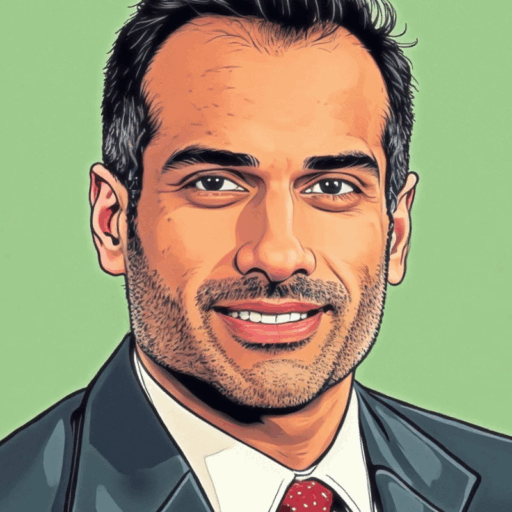Emerging and evolving global data protection and privacy laws are making compliance an increasingly complex challenge for cybersecurity leaders. Whether it’s the SEC’s cyber incident disclosure rules, global data privacy frameworks like GDPR and CPRA, or industry-specific certifications such as CMMC 2.0, compliance mandates and expectations are growing in complexity and urgency.
And businesses are already struggling. According to a 2024 BreachRx report, companies are failing to fully comply with SEC cyber incident reporting rules, with many companies underreporting key details.
For members of the Senior Executive Cybersecurity Think Tank—a group of trusted enterprise CISOs, startup innovators and service providers—this pressure has become a catalyst for deeper operational alignment. Below, they share their advice for turning compliance management from a necessary hurdle into a key differentiator in the marketplace.
“When security is done right, compliance follows—and scrutiny becomes an opportunity to demonstrate resilience.”
Don’t Treat Compliance as a Checklist
At IP Services, CEO Scott Alldridge applies the principles outlined in his Amazon bestselling book, VisibleOps Cybersecurity, to manage growing regulatory scrutiny.
“We embed compliance into daily operations—aligning IT, security and compliance teams under shared accountability,” says Alldridge. “Our structured playbooks and audit-ready processes ensure we’re prepared for SEC disclosure rules and global privacy laws alike.”
His message to fellow leaders? “Don’t treat compliance as a checkbox or one-time project. Build it into your operational DNA through visibility, process discipline and transparency. When security is done right, compliance follows—and scrutiny becomes an opportunity to demonstrate resilience.”
“Document everything—the good and the bad.”
Take Stock of What You Have and Document What You’re Doing
“Start with the basics,” advises Eoin Keary, Founder and CEO of Edgescan. “You need inventories of your systems and data. Without that landscape mapped out, it’s hard to know what needs protecting—or the levels of protection required.”
Keary adds that it’s not just physical and digital assets that need to be thoroughly documented. To effectively protect sensitive data—and to “show their work” in terms of compliance—organizations must go further.
“Understanding of data flows between critical systems and data is key in terms of cyber detection and monitoring,” he says. “Evidence of cyber-related activities, checklists and internal audits—including scheduling of such activities—is key to demonstrating the continuous nature of compliance and continuous improvement.”
The bottom line? “Document everything—the good and the bad.”
“Build with compliance in mind now to avoid costly retrofits later.”
Make Conscious, Constant Compliance Part of Your Culture
A 2024 Deloitte survey of audit committees found that while most ranked cybersecurity as a top priority, only 41% of audit committees believed they had sufficient expertise to manage cybersecurity efforts.
What do experts advise? Jeremy Dodson, Founder and CISO of Piqued Solutions, advises his clients not to skip steps or take shortcuts—and he and his team practice what they preach.
“We do everything we advise our clients to do ourselves, from aligning with SEC rules, NIST updates and global privacy laws to embedding compliance into daily workflows,” he says. “We run adversarial simulations, proactively document controls and apply our Secure AI Implementation Series internally, including model audits, red teaming and governance alignment.”
When it comes to compliance, what’s most important, Dodson says, is shaping culture, not just building controls.
“We treat regulatory alignment as a culture shift, not a checkbox, and we help our clients do the same,” he says. “My advice to peers? Build with compliance in mind now to avoid costly retrofits later.”
“The key is ensuring that readiness and resilience are built into every layer of enterprise operations.”
Ensure Regulatory Alignment Efforts Are Both Agile and Thorough
In the defense and national security sector, compliance frameworks grow and shift quickly—and the stakes are high. Umang Modi, Managing Partner and Chief Strategy Officer at TIAG, says his company treats alignment with changing regulations as an operational imperative, not a simple exercise.
“We maintain a dynamic compliance posture through automated control validation, continuous monitoring and integration with our enterprise risk management program,” he explains. “Our cybersecurity architecture, orchestration and telemetry pipelines ensure compliance evolves in lockstep with threat landscapes and mission priorities.”
Modi emphasizes the importance of being thorough, noting that TIAG counsels its federal clients to take a multilayered approach to compliance management.
“We advise embedding compliance into zero-trust roadmaps, modernization efforts and multi-domain operations,” he says. “The key is ensuring that readiness and resilience are built into every layer of enterprise operations.”
Leverage Compliance as a Competitive Advantage
For cybersecurity expert Salim Gheewalla, compliance management shouldn’t be viewed as just a defensive measure—companies with proactive, comprehensive compliance strategies are giving themselves a competitive edge.
“Approach regulatory requirements as both a risk mandate and a marketing advantage,” he advises. “From SEC cyber disclosures to global privacy laws, frameworks build customer confidence when embraced transparently.”
Gheewalla goes on to detail the practical tips he recommends for establishing a strong compliance and cybersecurity stance.
“Integrate automation and AI to surface compliance gaps in real time, reduce manual error and maintain audit readiness, he says. “Map your data flows, automate wherever possible and operationalize your response before you’re forced to.”
Robust compliance strategies take time and effort to implement, but Gheewalla says the ROI goes beyond having stronger defenses.
“Use compliance badges not just for checkboxes, but as strategic proof points that your organization takes security and privacy seriously,” he says. When done right, compliance isn’t just defense. It’s brand equity.”
Actionable Guidance for Cybersecurity Leaders
- Align security, compliance and IT teams under shared goals. Break down silos between teams and stress collective ownership to create cross-functional accountability and reduce audit risk.
- Inventory your assets and data flows. Know what you have, where it lives and how it moves. Documentation is foundational for compliance, risk management and breach response.
- Build a culture that keeps compliance top of mind. Retrofits are risky—and costly, in terms of both financial and brand equity.
- Maintain a dynamic compliance posture. Automation and system integration can help ensure compliance evolves as quickly as threats and regulations do.
- View compliance as valuable brand equity. When it comes to compliance, proactivity and transparency build customer confidence.
The Bottom Line
Whether they’re ready or not, companies with digital footprints are faced with a range of emerging and evolving global cybersecurity and data privacy regulations. While compliance management is a complex, daunting task, there is expert help available, and there is a bright side—even the possibility of a tangible ROI.
As the members of the Cybersecurity Think Tank note, compliance isn’t just about following rules—it’s about earning trust, driving culture and creating resilience. Done right, compliance becomes an engine for growth and a competitive edge, not just a cost center.










